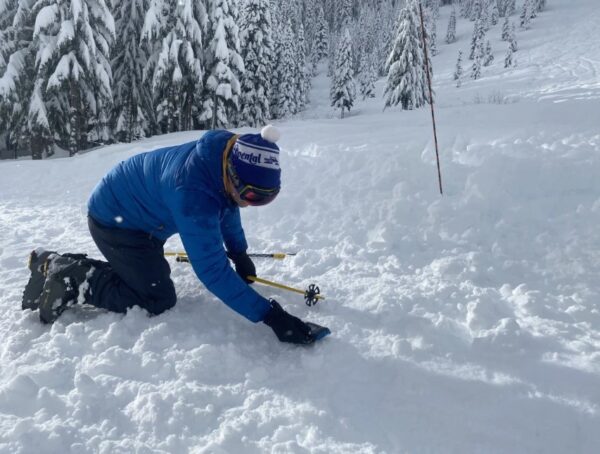An electronic device used to locate a victim buried in an avalanche.
An avalanche transceiver or beacon is an electronic device that sends (transmits) a signal, and searches for signals from other transceivers to enable rescue in the event of a burial. In send/transmit mode, it constantly emits a radio signal that is stronger at close range. If you get buried, your partners can switch their transceivers into search mode and follow a search pattern to locate the strongest signal and pinpoint your location under the snow.
To be effective, a transceiver must always be worn on your person and in send/transmit mode. Transceivers are typically worn in a chest harness beneath your outermost layer or in a purpose-built pocket to protect it from getting damaged or ripped from your body in an avalanche. It should be tethered by an elastic cord so you can drop it without losing it. Ensure that your battery life is always above 50% because lengthy searches can drain batteries. Practice regularly with your transceiver so that you are skilled and efficient in the event of a rescue. Most modern transceivers are digital: they use three antennas and signal processing in order to provide directional guidance and a numeric distance for the searcher. Most also have a flagging feature to assist with multiple burial searches.

